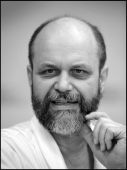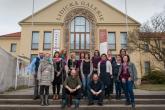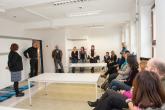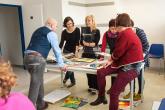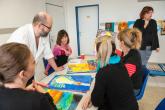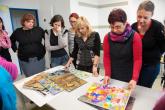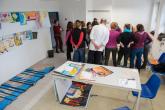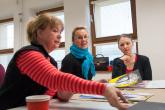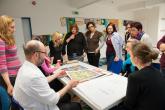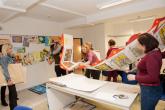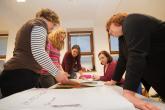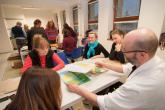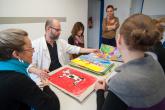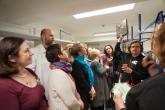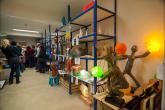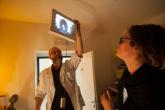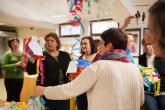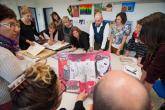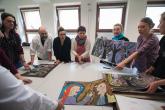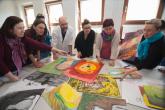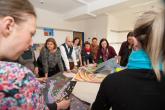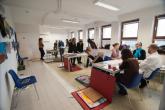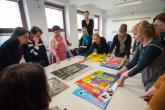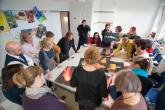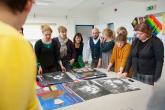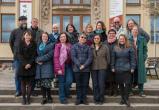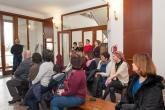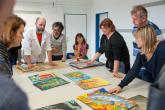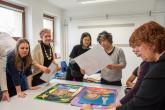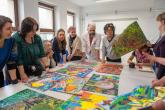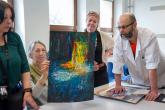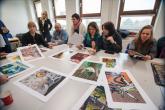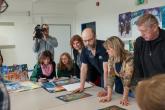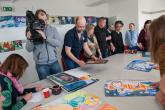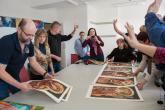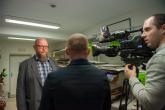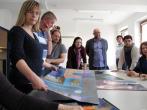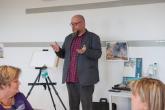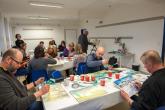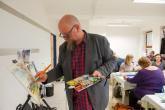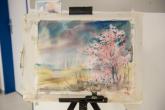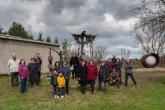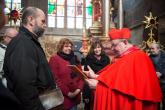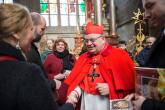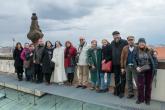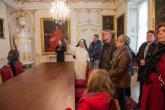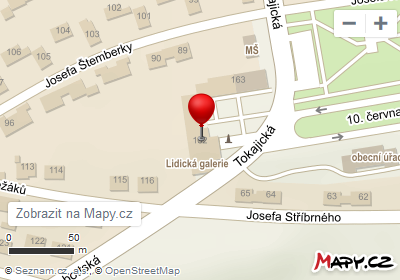Homepage » Archived editions » 43th edition » Panel of judges
Panel of judges
The expert panel of judges is made up of teachers of visual art branches at primary art schools and primary schools and of professional visual artists from Czech Republic and from abroad. The number of judges is not fixed, however, the panel has usually 13 - 23 judges. Many of them have engaged in the work with children for many years and also are judges in other art competitions which enhances their knowledge about the quality of art education of children in the schools in our country and abroad.
The panel of judges of the 43rd ICEFA 2015 sat in two rounds: on 26 – 28 March (selecting works) and 2 and 4 April 2015 (final awarding works) at the Lidice Gallery in Lidice.
Members of the 43. ICEFA 2015 panel of judges
Members of the panel of judges from Czech Republic
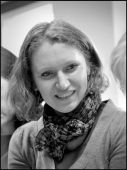
Jana Anděličová
teacher at Marie Podvalová Art School Prague 9 and Art School Štítného, Prague 3, Czech Republic
1st round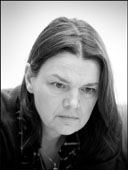
Ivana Erbenová
teacher at F. Kmoch Art School Kolín, Czech Republic
1st round
Čeněk Hlavatý
headmaster at Art School Mšeno, Czech Republic
1st and 2nd rounds
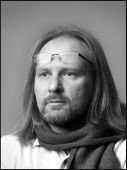
Martin Homola
photographer, Buštěhrad, Czech Republic
1st and 2nd rounds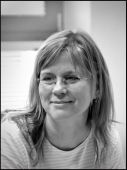
Zuzana Hrubošová
headmistress at M. Stibor Art School Olomouc, Czech Republic
2nd round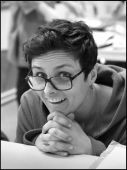
Ivana Junková
headmistress at Art School Řevnice, Czech Republic
1st round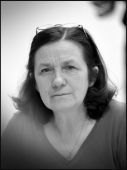
Hana Jurková
headmistress at Private Art School Jeseník, Czech Republic
1. and 2. round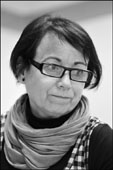
Hana Palacká
teacher at J. Kravaře Art School Prostějov, Czech Republic
1st round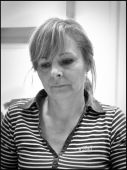
Helena Lisá
teacher at M. Stibor Art School Olomouc, Czech Republic
1st round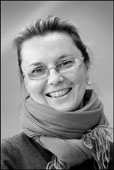
Ivana Schwarzová
teacher at Art School Strakonice, Czech Republic
1st round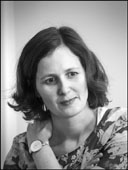
Martina Sumcová
teacher at Primary School Sedmikráska Rožnov pod Radhoštěm, Czech Republic
1st round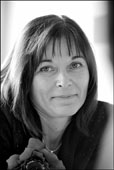
Romana Štajerová
teacher at Art School Plzeň, Jagellonská, Czech Republic
1st and 2nd rounds

Pavel Rajdl
teacher at F. Kmoch Art School Kolín, Czech Republic
2nd round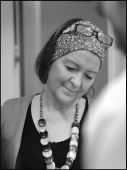
Zuzana Vlčková
teacher of arts at Gymnázium Kladno, Czech Republic
1st and 2nd rounds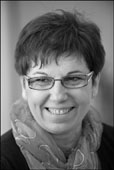
Alena Zupková
teacher at V. Vančura Art School Háj ve Slezsku, Czech Republic
1st and 2nd rounds
Members of Panel of Judges from abroad
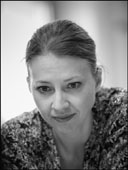
Monika Čurillová
teacher at Art School Bratislava, Slovakia
1st round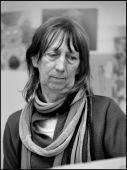
Emi de Graeve
visual artist, Manderfeld, Belgium
2nd round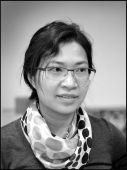
Iris Lau
the founder of the Gifted Artists Foundation, Hong Kong, China
2nd round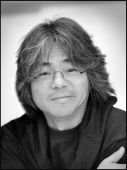
Henry Lau
the founder of the Gifted Artists Foundation, Hong Kong, China
2nd round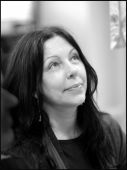
Renata Mečkovskiené
coordinator of Arts Department and teacher at Art School Trakai, head of the restoration department of the Historical Museum Trakai, Lithuania
2nd round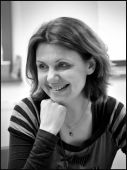
Areta Raudzepa
officer of the National Centre for education at the Ministry of Education and Science of the Republic of Latvia, Riga, Latvia
2nd round
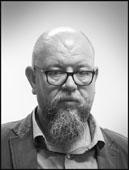
Vsevolod Romankov
teacher of art at School 1188, Moscow, Russia
2nd round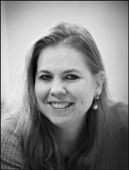
Debrah Sickler-Voigt
professor of art education, Middle Tennessee State University Murfreesboro, TN, USA
2nd round
Report of the session of the expert panel of judges held on 26–28 March and 2–4 April 2015 to evaluate the 43rd ICEFA Lidice 2015
Members of the Panel of the 43rd ICEFA LIDICE 2015
Chairman of the panel:
Josef Zedník – visual artist, Olešná (1st and 2nd rounds)
Members of the panel:
Jana Anděličová – teacher at Marie Podvalová Art School Prague 9 – Čakovice and Art School Štítného, Prague 3 (1st round)
Ivana Erbenová – teacher at Art School Kolín (1st round)
Čeněk Hlavatý – headmaster at Art School Mšeno (1st and 2nd rounds)
Martin Homola – photographer, Buštěhrad (1st and 2nd rounds)
Zuzana Hrubošová – headmistress at M. Stibor Art School Olomouc (2nd round)
Ivana Junková – headmistress at Art School Řevnice (1st round)
Hana Jurková – headmistress at Private Art School Jeseník (1st and 2nd rounds)
Hana Palacká – teacher at Art School Kravaře Prostějov (1st round)
Helena Lisá – teacher at M. Stibor Art School Olomouc (1st round)
Ivana Schwarzová – teacher at Art School Strakonice (1st round)
Martina Sumcová – teacher at Art School Sedmikráska Rožnov pod Radhoštěm (1st round)
Romana Štajerová – teacher at Art School Plzeň, Jagellonská (1st and 2nd rounds)
Pavel Rajdl – teacher at Art School Kolín (1st and 2nd rounds)
Zuzana Vlčková – teacher of arts at Gymnázium Kladno (1st and 2nd rounds)
Alena Zupková – teacher at Art School Háj ve Slezsku (1st and 2nd rounds)
Foreign members:
Monika Čurillová – art teacher, Bratislava, Slovakia (1st round)
Emi de Graeve – visual artist, Manderfeld, Belgium (2nd round)
Henry and Iris Lau – the founders of the Gifted Artists Foundation, Hong Kong, China (2nd round)
Renata Mečkovskiené – coordinator of Arts Department and teacher at Art School Trakai, Head of Restoration Department of the Historical Museum Trakai, Lithuania (2nd round)
Areta Raudzepa – officer of the National Centre for Education at the Ministry of Education and Science of the Republic of Latvia, Riga, Latvia (2nd round)
Vsevolod Romankov – art teacher, School 1188, Moscow, Russia (2nd round)
Debrah Sickler-Voigt - art teacher, Middle Tennessee State University Murfreesboro, TN, U.S.A. (2nd round)
Dedicated to the theme LIGHT at suggestion of the Czech Commission for UNESCO to celebrate 2015 as the International Year of Light, this year's edition saw 21,380 participating children from 71 countries. Compared to previous years, the numbers of entrants and countries were lower, nevertheless, the amount of entries was overwhelming and challenging in terms of processing and evaluating. The Lidice Gallery was literally flooded and lighted up with entries featuring light – with suns, stars, lit-up cities and streets, cathedrals, tunnels, auroras, fires, fireworks and volcanoes as well as secrets of optics. Lightbulbs, lamps, candlesticks, candles and rays of light emanating from them could be counted in thousands.
As usual, the panel of judges worked in two rounds in two successive weeks. In the first round, more than 16 thousand entries were eliminated that did not meet qualitative and technical requirements of the competition, the second round saw, after a demanding decision-making process and discussions, about 1,300 out of 4,500 entries selected to be awarded a medal or an honourable mention.
The selection process eliminated entries that did not meet the technical requirement of the competition – they did not depict the recommended theme, exceeded the maximum size (50 x 70 cm), were mounted on colour papers or in a passepartouts, the limit in number of entries by the same artist in one medium was exceeded – or entries that were visually poor, in terms of composition, material or technique. Many vast collections that had not been pre-assessed by the teacher contained schematic and unfinished works in which an effort prevailed to depict the theme realistically, to the detriment of visual imagination, often accompanied with the use of unsuitable art (or rather non-art) materials and techniques, insufficient guidance in composition as well as presentation in exaggerated forms and sizes. Although it was expected that the theme would offer wide opportunities for interesting and innovative artistic interpretation, the panel of judges had to state that rather the opposite held true. In most entries, the theme was treated in a rather descriptive manner, often in a simplified, one-sided way. A question remains whether the theme itself was too difficult for children to grasp in any other way than as a contrast of light and shadow, light sources and inventions in optics. On the other hand, the gratifying thing is that there were other entries that were artistically very well done and contemplated also the inner, spiritual light.
In their overall summary, the panel of judges addresses all art teachers, asking them to think twice when selecting entries for the exhibition; they recommend to arrange a pre-selection in which it would be possible, perhaps through the cooperation of multiple teachers, to assess the works and send in only a representative collection for the competition. A school 'mini-competition' could be another thrill for children.
In professional discussions, the panel sought the causes of both the lower number of entries and particular tendencies that had been indicated also in previous editions. The panel sees a gap widening between the average or under-average collections and those distinguishing themselves with the originality of their interpretation of the theme and the refinement of its execution. Commendable are those collections that had been sorted out carefully to represent the purposive and consistent work of individual schools or other institutions in which pupils are educated in arts. The panel emphasized once again that the well-done works undoubtedly reflect also the guidance received by the children from their art teachers, including the interpretation of the theme, and say a lot about how intensely and how long the children dwelt on the theme, for a good quality is not a matter of chance. However, some works were disqualified because of too strong and evident influence of the teacher.
Summary on entries
Number of entries in total: 21,380
Number of participating / awarded countries: 71 / 67
Number of participating / awarded organizations: 1644 / 432
Out of the total of 21,380 entries from 71 countries, 1,282 were awarded a prize by the panel of judges and 190 received medals.
Summary on foreign entries (apart from Czechia and Slovakia)
Number of foreign entries: 13,819 (12,521 paintings, 832 photographs, 64 items of ceramics, 402 mixed media items)
Number of participating countries: 69 (apart from Czechia and Slovakia)
Number of participating / awarded organizations: 1,171 / 255
This year's edition saw 13,819 entries by children from 71 countries, which is less than in previous years. While, compared to last year, participation of some countries was significantly lesser, even of consistently successful schools, e.g. Azerbaijan, Montenegro, China, Malaysia (by 700 entries), Russia (by 1,700 entries), Srí Lanka, Turkey (by 1,000 entries), Ukraine (by 700 entries), other countries had more children involved, e.g. Bosnia and Herzegovina, Serbia and Thailand. Foreign entries won 533 prizes including 81 medals (61 medals to individuals, 1 medal for a collective work and 19 medals to schools for their collections). Most awards went to children from China, Lithuania, Latvia, Romania, Russia, Slovenia, Serbia and Ukraine.
As has become a tradition with the foreign entries, tempera and acrylic paintings and various types of pastel drawings prevailed, supplemented by works in less common and more difficult media (aquatint, etching and drypoint) as well as aquarelle paintings and pencil drawings. Traditional techniques, such as painting, showed a certain decline in numbers and quality; on the other hand, photographs and their collections were more abundant than in previous years. A plausible explanation may be that the theme LIGHT was powerful inspiration for young photographers and that the technical equipment required for this form of artistic rendition is more readily available.
In view of the number of countries presenting the children's works, it is not possible to comment on each country individually, rather, the panel of judges agreed on giving its opinion only on bigger collections. It needs to be emphasized that the countries with traditionally well developed art education system did not lag behind expectations this year either. Interesting collections came from schools in Bulgaria, Estonia and Latvia, and what came as a pleasant surprise was collections from Hungary, Slovenia and Serbia. Most schools in these countries, works of which were presented to the panel of judges, deserve appreciation for their high standard of execution of the theme in printmaking techniques. Traditionally well represented countries, such as Russia and Ukraine, got somewhat stuck in the traditional interpretation of the theme and its artistic execution. Another big collection came from Turkey, in which quantity rather than quality prevailed, with the standard of entries a bit lower than in previous years. Similarly represented were some countries of South Eastern Asia; their works were often influenced by commerce and media production, with the artistic execution of the theme not entirely adequate and with materials that did not suit the purpose. Therefore, works from certain art schools – e.g. Kids Creative and Simply Art from Hong Hong – stood out all the more; their entries distinguished themselves with a thoughtful approach both to the theme and the chosen material that had often implied the traditional painting and drawing techniques typical for this part of the world. As usual, photography was well represented by collections from Croatia and Lithuania, nevertheless, as a pleasant surprise came photographic contributions from countries that had not yet sent in good entries made in traditional media, e.g. Israel, Uzbekistan, Ukraine and the UK.
Among foreign entries, the spatial ones were represented particularly in the Latvian collection presenting interesting items of ceramics and glass.
Summary on Czech entries:
Number of entries: 5,658 (4,211 paintings, 462 photographs, 250 items of ceramics, 735 mixed media items)
Number of participating organizations: 356 (37 nurseries, 93 first-level schools, 105 art schools, 30 special schools, 34 hobby groups and child and youth centres, 19 secondary schools, 38 individuals)
Number of awarded organizations: 132 (5 nurseries, 22 first-level schools, 66 art schools, 14 special schools, 15 hobby groups and child and youth centres, 6 secondary schools, 4 individuals)
In comparison to last year and in contrast to the decline in the numbers of entries and participating foreign organizations, this year's edition saw more participants and more organizations from the Czech Republic, some of them participating for the first time. Czech entries won 611 prizes including 90 medals (60 medals to individuals 2 medal for a collective work and 28 medals to schools for their collections).
As in the last edition and primarily thanks to systematic and professional work of the teachers, a great success arrived for planar works (including photographs) by children from the following art schools: Háj ve Slezsku, Hradec nad Moravicí, Hranice, private Jeseník, F. Kmoch Kolín, Krnov Hlavní sq. Kroměříž, Mnichovo Hradiště, Most Moskevská street, Mšeno, Nové Město pod Smrkem, Olomouc, Písek, Plzeň – Jagellonská and T. Brzkové streets, Prague 3 – Štítného street, Prague 5 – Štefánikova street, Prague 9 Čakovice, Prostějov, Řevnice and Strakonice. All the more, however, the panel of judges appreciated the skilful work of teachers at first-level schools, e.g. Červené Pečky, Opava – T.G. Masaryk street, Sedmikráska Rožnov pod Radhoštěm, at special schools, e.g. Centrum Arpida České Budějovice, Home for the Handicapped Zběšičky and Domov Raspenava, as well as at children and youth centres, e.g. DDM Český Krumlov, Art Workshop Paletka Plzeň and Atellier JOE in Roztoky. The panel was pleased to acknowledge the increase in the number of art schools that had participated for the first time and sent in good collections, e.g. Art School Bystré and Art School Dačice. Compared to previous years, the number of spatial entries decreased this year, the theme of light being difficult even for schools that has been consistently successful in 3D items. Gratifying for the panel were items of ceramics from Art School Český Krumlov, glass collections from Art School Mšeno and the collection of paper-mache items from Art School Strakonice.
The basic difference between foreign and home entries was in the interpretation of the theme. While foreign schools adopted rather simplistic approach to the theme, Czech schools, particularly the art ones, offered other interesting visual ways and methods, presenting also the spiritual aspect of the theme and using wide variety of artistic possibilities and materials, from paper through wire up to glass and ceramics. Czech art teaching has surely made a solid progress in the last thirty years, which puts particularly the Czech schools ahead in terms of thoughtful and sensitive approach to themes and better familiarity with the language of visual arts. Nonetheless, the competition showed differences in the standards of individual art schools, because apart from well-balanced and elaborated collections also very poor ones had been sent in for the competition.
Summary on the Slovak entries:
Number of entries: 1,903 (1,584 paintings, 117 photographs, 12 items of ceramics, 190 mixed media items)
Number of participating organizations: 117 (11 nurseries, 14 first-level schools, 76 art schools, 10 special schools, 3 hobby groups and child and youth centres, 3 individuals)
Number of awarded organizations: 45 (1 nursery, 4 first-level schools, 35 art schools, 4 special schools, 1 hobby group)
The decrease in the number of entries this year was apparent also in Slovak contributions; we received 600 less entries than last year. The assessed entries received 138 awards, out of which 19 were medals (13 individual medals and 6 medals to schools for their collections); the most successful art schools were the following: J. Cikker Art School Banská Bystrica, Art School Holíč, Art School Kežmarok, Art School Spišská Belá, F. Kafenda Art School Vrútky and L. Arváy Art School Žilina Dolný Val; hobby centres were represented by Citizens Art Association SLNEČNICE from Bratislava.
Besides very fine collections of prints (colour linocuts and drypoints), some entries from art schools showed poorer quality both in selection of subjects and in artistry. The same holds for works of some Slovak nurseries and first-level schools.
Prize of the Panel of Judges
From among the Czech schools, the Prize of the Panel of Judges, awarded to schools for their persistent, purposeful and excellent work with children, was given to Art School Mšeno, which had presented itself with an incredibly rich and interesting collection that definitely surpassed others in the scope of the media used, both in planar and spatial works. It needs to be mentioned that for many years now, the school has not been afraid to experiment, seeking offbeat, innovative ways and artistic possibilities and using, besides usual materials, also glass, metal and plastic, as well as digital technologies.
As for foreign candidates to the Prize of the Panel of Judges, there were several of them of even quality. After the final discussion, the panel awarded the prize to the organization Młodzieżowy Dom Kultury – pracownia plastyczna "Creatio" from Polish Rybnik, which had presented a splendid collection of prints and receives high accolades at ICEFA Lidice every year.
Conclusion
The panel of Judges would like to conclude with words of thanks to all young artists who embarked on the hard creative work to capture a difficult theme. The prizes were awarded to the best entries demonstrating interesting ideas and innovative ways of interpretation that reflect the broadness of child's imagination; nevertheless, all this year's entries deserve appreciation because they testify to the fact that artistic creation plays an irreplaceable role in the life of children across continents. Our thanks belong to all who work with children, developing their imagination and visual sensitivity and helping them master the traditional and alternative artistic techniques. Being aware of the fact that not every country where children are working on their entries offers peaceful environment and full material equipment, the panel highly appreciates that ICEFA Lidice still appeals to many young artists from all over the world.
In the final discussion, the members of the panel came to an agreement that it is necessary to document not only the well-done artistic works, but also works that did not receive any prize for various reasons. It is because they can represent trends that young artists should avoid. Selection of these entries will be filed in the competition files and will be used as an illustration at the sessions of the panel, for documentation purposes and as an aid in decision-making of the panel.
The panel would like to thank to the last but not least, the staff of the Lidice Memorial, for the excellent conditions they prepared for the work of the International Panel of Judges, enabling them to concentrate on selecting and assessing the entries and making decisions on the awards. Thanks to the peaceful environment and ever-improving organization of both rounds, some room is left for discussions, exchange of opinions on the current edition of the competition and exchange of experience from the work of the members of the panel, which is an enrichment not only for the Czech members but also for the foreign ones. Open days of the panel are another asset that was used by representatives of several schools again this year.
It is gratifying that also this year the registration process and the work of the panel captured attention of the media – Radiožurnál (12.3. ), ČT 24 (News 4.4. ) and Kladenský deník (12.4. ).
Josef Zedník, Chairman of Panel of Judges of the 43rd ICEFA Lidice
Zuzana Vlčková, a member of Panel of Judges of the 43rd ICEFA Lidice
Ivona Kasalická – Head of the Lidice Gallery and Curator of ICEFA Lidice
Portraits of jury members and photos from the jury: © Martin Homola

